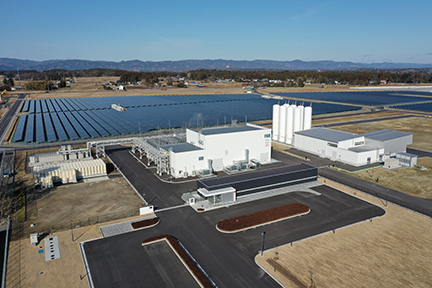Why we need reactant based h2 production
Depending on the industry, the outlook for a green hydrogen transition is either seen as ranging from necessary, to green H2 will play a small part in overall decarbonization. Massive industrial chemical industries such as ammonia and methanol are seen as being in the “absolutely necessary” camp when it comes to a transition to green hydrogen. These industries won’t exist without hydrogen, and unless they transition to green hydrogen production then they will continue to be among the largest contributors to CO2 emissions. Industries such as long-haul commercial shipping are also seen as being highly likely to transition to green hydrogen as their fuel since hydrogen is a superior long-distance energy source when compared to battery power. Some of the “less likely” players according to the models would be industries such as home heating (long expected to move to complete electrification) and passenger vehicles. Despite the predictions about the future of hydrogen vehicles, major manufacturers such as Toyota, Hyundai, and Honda are continuing to roll out hydrogen-powered cars.
The Not So Promising Future of Electrolysis
While this all seems like very exciting news for the future of the hydrogen economy, there are major barriers to this future becoming a reality. The major barrier is that the dominant method for green hydrogen production is electrolysis, and for the hydrogen economy to be realized by means of electrolysis there will need to be an astonishing increase in renewable electricity generation completely dedicated to hydrogen production.
According to the Energy Transition Commission (ETC), for the

hydrogen economy to be realized there will need to be 30,000 terawatt-hours (TWh) of dedicated renewable energy for electrolyzers. This is in addition to the 90,000 TWh required for general electrification of everything not using hydrogen as its energy source. To put this in perspective, 30,000 TWh is equal to 30-million-gigawatt hours (GWh), or 30 billion megawatt-hours (MWh). In 2019, the average American household used 10.6 MWh, which means that the energy required for an electrolyzer-powered hydrogen economy would be enough to power nearly 3 billion homes for an entire year. To put it further in perspective, in 2018 global power consumption was 23,398 TWh according to the EIA. That means that the hydrogen economy alone is going to require nearly 7,000 TWh’s more than the entire world used in 2018.
Why We Need a Reactant Based Approach
The fact that a hydrogen economy, if powered by electrolyzers, is going to require a massive renewable energy infrastructure project is undeniable, but a reactant-based approach to hydrogen production would virtually eliminate this requirement. Reactant-based methods use the stored energy in highly reactive elements to produce pure hydrogen from water. This means that there is no need for massive energy infrastructure to start making hydrogen with reactants. The only construction needed is of the hydrogen production plant and a facility for byproduct processing.
While a complete reliance on electrolysis for green hydrogen production doesn’t seem like the best way forward, complete reliance on reactant-based approaches may not be the most effective plan either. The future of hydrogen production is likely going to be a blend of approaches, and this means that reactant-based methods can reduce the necessary electrolyzer capacity needed to meet hydrogen demand, while also producing advanced materials as co-products with extremely high value.
So, what is the difficulty with reactant-based hydrogen production, and why isn’t everyone doing it already? It ultimately has to do with production cost, but we at GenHydro™ have a solution to the problem of cost, and it has everything to do with the other products that GenHydro™ reactors can produce, mainly cogenerated power and a high-value byproduct.

